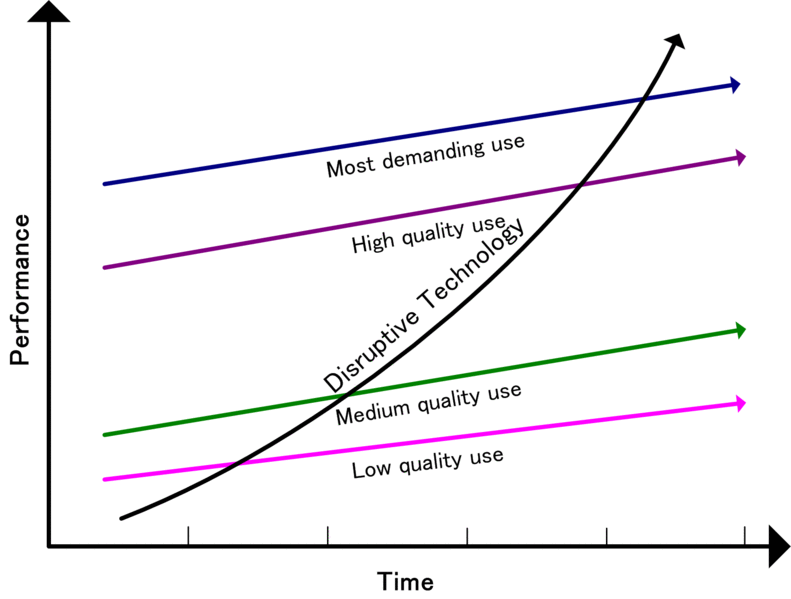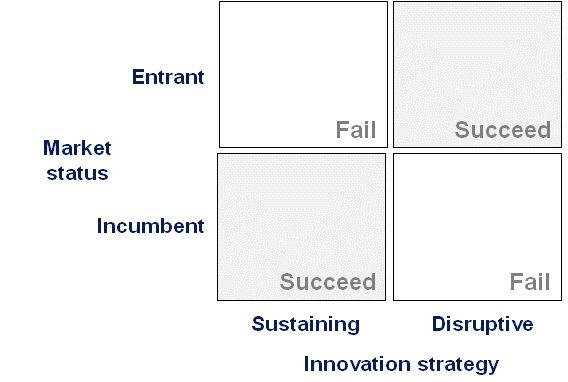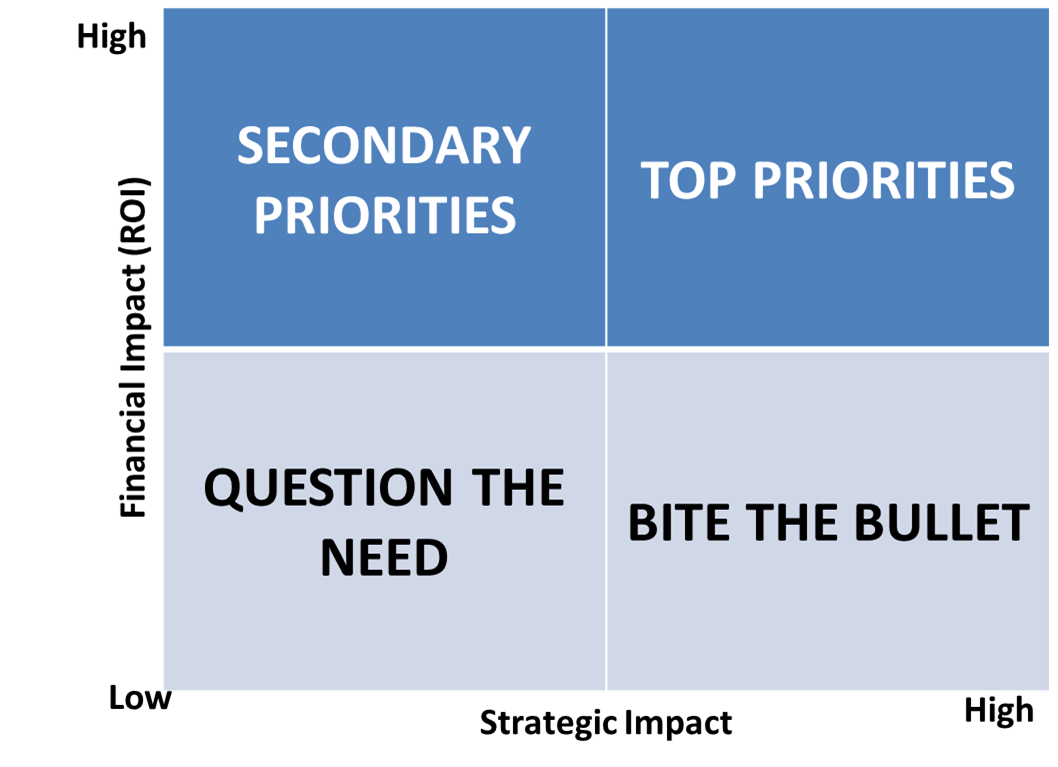The rise of Axiom, Clearspire and other disruptive innovators in the Legal Process Outsourcing (LPO) segment of the market has led to a wave of articles and blog posts – some insightful and well considered and some likely to prove embarrassing to the author(s) down the road. We have been addressing law firms’ strategy development and strategic planning needs for over 25 years and I personally have been a professional strategist for nearly 30. That contributes to my frustration with some of the writing out there – namely, this stuff isn’t particularly new (although some of the more successful disruptors in the legal industry are relatively new).
Clay Christensen published The Innovator’s Dilemma in 2000 – in the wake of documenting dozens of disruptive business models during the dot.com boom. Since that time, multiple books (including follow-ups by Christensen himself) and journal articles have been written building on that initial landmark. Further, several industries have adapted (and adopted) innovation toolkits based largely on the principle steps involved in pursuing disruptive innovations.
We covered this topic in reasonable depth in our book Strategic Planning for Law Firms: A Practical Roadmap. For the benefit of blog readers, we have excerpted an edited portion of that discussion below. We hope this helps you and your firm think about the strategic implications of disruptive innovation in the legal industry. Please keep in mind, especially in the legal industry, disruptive innovation is not the only successful approach to innovation and new service development. This a tool for pursuing one type of innovation and there are other valuable innovation tools with application to the legal industry.
* * * * * * * * * * * *
Disruptive innovation is an approach to product, service and business process development that focuses on delivering “good enough” products or services. In other words, disruptive innovations target and capture the so-called low end of a given market – usually by delivering “good enough” performance at a dramatically lower price than full service or full function incumbents.
Disruptive innovators typically attract either non-consumers of a product or service (essentially creating a new solution and a new market) and/or customers who are “overshot” or over-served by a higher cost and higher function solution than they really need (creating a low end disruption). There are dozens, if not hundreds, of examples of disruptive innovations entering and capturing the low end of their given market – Skype instead of full function video links, Quicken rather than more complex accounting software, cameras integrated into cell phones, and Metro’s free daily newspapers.
Origins of the Tool
Clayton M. Christensen is credited both with the research that identified the fundamental principles of disruptive innovation – in the first of two landmark books, The Innovator’s Dilemma – and with the subsequent work that codified how to pursue disruptive innovation in your own organization. Christensen’s second book, co-written with Michael Raynor, The Innovator’s Solution outlined the steps to pursuing disruptive innovation.
The disruptive innovation process involves three major steps:
- Opportunity Identification – This step includes identifying non-users of a product or service as well as users whose needs appear to be “overshot.” With potential target clients or customers in mind, opportunity identification focuses on defining the “jobs to be done” for those customers (i.e., identifying through traditional market research the core needs those non-users and overshot users actually need fulfilled).
- Idea Formulation and Shaping Ideas – The second step involves developing disruptive ideas – the authors provide a range of supporting tools to help with that process. With ideas in hand, this stage of the disruption process calls for an iterative process for refining and testing ideas. Christensen’s research found that innovators rarely understand the needs of non-users or overshot users out of the gate. Rather, they need to refine their ideas via low cost, low risk failures – leading to a refined product or service that can capture a larger and potentially growing market.
- Building a Business – The third step focuses on establishing a sustainable business to market the solution and grow the business to reasonable scale. This stage requires the innovator to identify and understand critical areas of uncertainty, experiment in ways that resolve that uncertainty in the early growth stages of the business, and refine the underlying business model in response to what is learned.
Christensen and his co-authors have built upon and refined this approach over the past ten-plus years and there are now a number of industry specific innovation methodologies in circulation (though none focused directly on the legal market).
Application to the Legal Industry
The application of disruptive innovation for incumbent (i.e., traditionally structured) law firms is largely two fold. First, for well established firms, understanding disruptive innovation is important. In particular, successful low end innovators can and are dramatically altering the established market – client relationships, pricing expectations, profit potential and otherwise. Ultimately, they may actually surpass incumbent competitors – fundamentally changing the market they undercut initially.

Source: The Innovators’ Dilemma; Clayton Christensen; 2000
Second, there may be markets ripe for disruption that can be served by your own firm. In those instances, firms or practice groups can directly apply the disruptive innovation tools to targeted markets – identifying non-users/overshot users; defining the “jobs to be done” for them; creating, testing and refining solutions; and building a sustainable business that grows to scale over time.
Examples of disruptive innovation in the legal industry have emerged in a number of specialty areas, as well as in important elements of larger scale legal processes. For instance, the emergence of pre-paid legal services and “do-it-yourself” online tools have captured clients who were previously non-users of legal services – RocketLawyer.com is one of many examples of this business model (largely online, but with human talent behind it). Talented patent attorneys have created micro-boutiques that do nothing but patent prosecution on a fixed fee per application basis. Most threatening for bigger firms (and over the long run for mid-size firms), legal process outsourcing shops like Axiom are creating dramatically lower cost approaches to selected phases of large scale litigation and transactions. In virtually every one of these examples, the solutions offered are “good enough” for over-served clients and the costs are dramatically lower than using a traditional firm.
It is critically important to understand the underlying business models of emergent disruptive innovators. If their solution is scalable, if it can add new capabilities over time (gradually encroaching on your practice’s incumbent solution), and/or if it attracts clients who perceive themselves to be “overshot,” those innovators need to be taken into account in the context of developing and implementing competitive strategies.
Using the Tool in a Law Firm Setting
The three phase approach outlined above applies fairly universally. It is certainly applicable in a law firm setting without unique tailoring or embellishment. Because there is considerable depth, nuance and insight in The Innovator’s Solution, it is recommended that those planning to pursue disruptive innovation take the time to read that book and use the many supporting tools provided in that text.
There is an important consideration law firm leaders should recognize prior to engaging in an all-out pursuit of disruptive innovation. Michael Raynor continues to research disruptive innovation with a high level of energy. His most recent book, The Innovator’s Manifesto, includes an important insight for incumbent competitors. Namely, incumbents tend to be highly successful at creating incremental innovations (i.e., innovating at the high end), but are dramatically less successful in introducing disruptive innovations (see the chart below). There is a reason why the first book characterized disruptive innovation as a dilemma – it fundamentally challenges the established (usually highly profitable) business model.

Source: The Innovator’s Manifesto; Michael Raynor; Crown Business; 2011.
This would suggest that firms wanting to capture disruptive innovation in an area where they are already an incumbent competitor should consider a few alternatives to directly pursuing disruption within their firm/practice group. First, they can acquire a growing disruptor – someone who has already worked through the first two (and possibly all three) stages in the disruptive innovation process. Second, they can co-opt a disruptive innovator, using them as a sub-contractor (a recent interview by Lee Pacchia at Bloomberg Law identified some anecdotal examples of this approach). Third, they can set-up an ancillary business to develop the disruptive service offering – removing some of the principle barriers incumbents face when trying to launch disruptive innovations that will compete with their well-established services.
Further Reading
Those interested in pursuing disruptive innovation (or who have a strong interest in the topic) are encouraged to read Christensen’s and Raynor’s The Innovator’s Solution (Harvard Business School Publishing, 2003). Raynor’s new book, The Innovator’s Manifesto (Crown Business, 2011) provides valuable insights into the drivers of success and failure among innovators.
* * * * * * * * * * * *
As always, comments are open below and we welcome your calls and emails at (312) 543-6616 and jsterling@sterlingstrat.com respectively.




